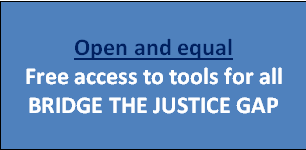Wouldn’t that be something? Unfortunately, this headline-worthy development is just that—a rumor. And today is National Start a Rumor Day. In observance of this quirky national day, we’re exploring the truth of the justice gap, not the rumor, with the following facts below.
Read moreCelebrating National Pro Bono Week: Supporting Communities and Bridging the Justice Gap
Every October, legal professionals across the United States come together to celebrate National Pro Bono Week, a time to honor the extraordinary contributions of volunteer attorneys and to encourage continued engagement in pro bono service. Organized by the American Bar Association, this year’s celebration runs from October 19–25, 2025, uniting lawyers, advocates, and community partners nationwide under the shared mission of expanding access to justice through free legal assistance.
Read moreABA Profile of the Legal Profession: A Closer Look at Civil Legal Aid
On November 30, 2023, the American Bar Association released its fifth annual Profile of the Legal Profession. This free report, a 140-page compilation of statistics and trends about lawyers, judges, and law students, includes sections on demographics, wages, law schools, judges, pro bono work, women in the profession, legal technology, lawyer well-being, and lawyer discipline. One additional chapter — a review of civil legal aid in the United States — is the feature we wish to explore in today’s blog post.
Read moreLegal Tech and the Justice Gap -- A Few Haiku for Poetry Month
Today is the last day of National Poetry Month. We’ve been celebrating all month long with an exhibit called Poetry of the Bench and Bar. Today, we conclude the celebration with a few haiku — variations on a theme of bridging the justice gap. Enjoy!
Geography and the Law Exhibit at the Harris County Law Library
This month, the Law Library is exploring Geography and The Law, a new exhibit on display until February 28th. Learn how a treasure map and a Google Earth satellite image played a role in two recent court decisions and how a Story Map is impacting access to justice.
The following cases are featured in the exhibit.
United States of America v. Paciano Lizarraga-Tirado, 789 F. 3d 1107 (2015)
After a Border Patrol agent recorded the GPS coordinates of a defendant’s arrest using a handheld device, the evidence was questioned as hearsay. The panel of judges in this case disagreed. Google Earth satellite images, like photographs, make no assertion, even when the software identifies a specific location on that image with a tack and GPS coordinates. Tack-coordinate pairs are auto-generated and require no human intervention. As such, images labeled in this way are not hearsay.
Smith v. The Abandoned Vessel, 610 F. Supp. 3d 868 (2009)
Plaintiff Nathan Smith, a self-described treasure hunter, sought title, under the law of finds, to a legendary sunken ship in Refugio County, Texas. To locate the ship, Smith consulted an 1851 county map along with GPS data and satellite images from Google Earth. He cobbled together his own sort of treasure map and felt certain that he had found the long-lost vessel. Unfortunately, his spurious claims and questionable geographic and scientific evidence failed to persuade the court. The case was dismissed.








